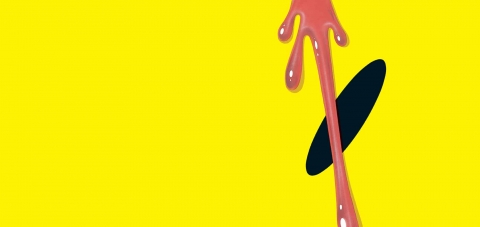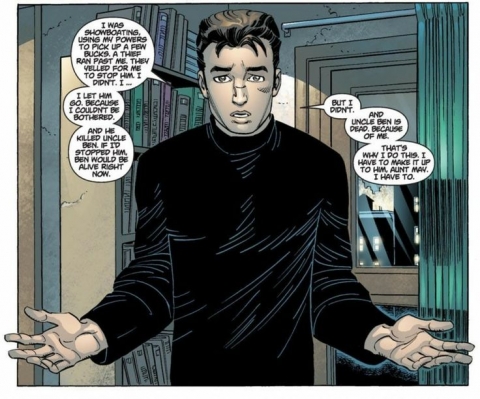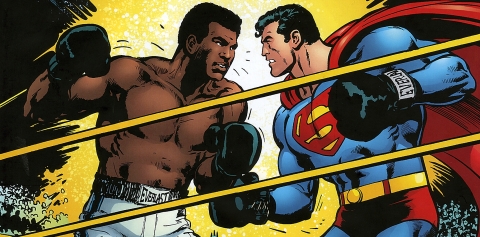52 weeks. 52 different writers. 2 trade paperbacks or hardcovers a week. Each week I’ll take a look at a different writer and read two different collected editions from within that person’s repertoire to help in the examination of their work. Grant Morrison is in the spotlight this week, with a look at his work with DC’s Man Of Steel.
Several years ago, DC decided to introduce the “All-Star” initiative for their three biggest heroes, Batman, Superman, and Wonder Woman. The idea behind the All-Star imprint was to give the biggest and brightest creators a chance to give new readers fresh takes on the characters while still having access to their history. It was essentially a way of safely rebooting these characters without actually doing away with all the continuity shackled to them. One series was received with a lukewarm reception, one series never even got off the ground, and another was given critical acclaim. That series was none other than Grant Morrison and Frank Quietly’s “All-Star Superman”. Morrison cracked his concept for how he’d write Superman several years beforehand, originally wanting to do another fresh reboot with the character when he had an usual experience with a Superman cosplayer that resulted in him seeing Superman in a different light entirely. To make a long story short, he saw a very relaxed looking Superman cosplayer at a convention and came to the realization that Superman would be a relaxed and cool individual, never being tense since nothing could actually hurt him. I highly encourage readers to track down the full version of the story online as it is hilarious and definitely sounds like something only from the world of Grant Morrison.
All-Star Superman
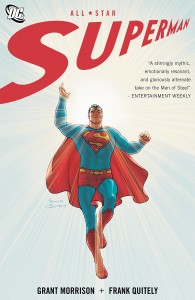 All Star Superman follows the Man of Steel during the last year of his amazing life. During a mission into space involving the sun, Dr.Quintum and his crew are ambushed by a Lex Luthor controlled robot. Superman flies in to save the day and protect everyone but at a heavy cost. Luthor’s master plan all along was to over saturate Superman’s cells with solar radiation, enhancing his powers considerably but effectively giving him a type of solar cancer at the same time. Luthor is wheeled off to prison knowing that he dealt a delayed final blow against his greatest adversary, placing Superman on a slowly ticking clock heading towards his inevitable demise.
All Star Superman follows the Man of Steel during the last year of his amazing life. During a mission into space involving the sun, Dr.Quintum and his crew are ambushed by a Lex Luthor controlled robot. Superman flies in to save the day and protect everyone but at a heavy cost. Luthor’s master plan all along was to over saturate Superman’s cells with solar radiation, enhancing his powers considerably but effectively giving him a type of solar cancer at the same time. Luthor is wheeled off to prison knowing that he dealt a delayed final blow against his greatest adversary, placing Superman on a slowly ticking clock heading towards his inevitable demise.
The loveliest part of this collection is that the name of the series is actually done justice, as these stories have “all-star” qualities to them. This is truly an all-star quality outing by Superman, as Grant Morrison plugs in plenty of amazing characters, ideas and moments from the Man Of Steel’s past to give new and old fans of Superman a compelling read. Each and every issue maintains feels grand in nature, delivering some of the biggest and brightest moments you could ask for from Superman. There’s just this sense of something special occurring in every issue, with everything being so much fun that you feel almost awestruck by the moments that are on display just for your enjoyment.
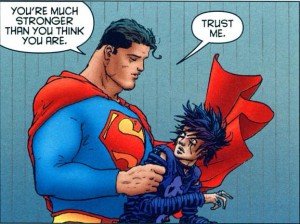
The twelve issues in this volume all connect together as a cohesive story but also take an anthology-like approach at the same time. Each tale is particularly different from the one before it but still keeps a sense of connectivity because they all occur in a world where Superman is dying. But that doesn’t mean each issue has to be about Superman, as highlighted by issues starring Lois Lane, Jimmy Olsen and Lex Luthor. There are many things that factor into making these character centric issues so great and the biggest piece of that might be the way they reflect how Superman has effected each of those characters lives. For Lois, Superman is the love of her life, the one person she holds most dearly to her heart. To Jimmy Olsen, Superman is the best friend he has in the entire universe, showcasing that you don’t need to have super powers to form a tight bond with someone like Superman. As for Lex Luthor, the obvious answer is that Superman has fueled his life of crime but upon closer inspection you realize that he is actually responsible for his drive and ambition. It is Lex’s desire to show the world that they don’t need, nor should they rely, on a superhuman because there will come a time when they are absent. If it wasn’t for Superman, Lex would lack the intense focus he has, potentially never developing it without something to place an alarmingly large amount of his effort towards.
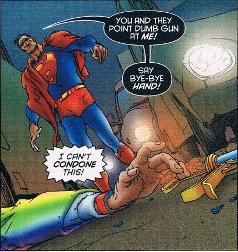
As much as Morrison nails the relationship Superman has between all the characters in his life, it is actually his portrayal of Superman himself that might be the biggest triumph that this story has going for it. Morrison states that before writing this story he came to the realization of how Superman really would be in all instances, whether they be peril or happiness. The epiphany set in that Superman would be a relaxed man, he wouldn’t flinch at a blow and would feel at ease sitting amongst the clouds, not puffing his barrel chest out at all times. It is a brilliant, simplistic realization to come to but one that will forever change how the reader views Superman, making so much sense that you’ll shake your head for not realizing sooner how right Morrison is. This realization defines the character that you see throughout the entire volume and even helps to better display the difference between Clark Kent and Superman. It is brilliance to have Clark Kent play up the idea of his human disguise on more than just an aesthetic level, choosing to play with Kent’s physicality as well. Kent walks with a hunch and comes off as a farm boy who is uncoordinated as well as clumsy because he is too large for his surroundings. Meanwhile, Kent uses this clumsiness not only as a way to deter suspicion about his true identity but to save lives as well. On more than one occasion in these stories Kent stumbles about like a buffoon, knocking over and dropping things, only to actually be doing these things to prevent people from seriously harming themselves. It is yet another instance of simplistic genius on the behalf of Grant Morrison.
As always, there is a “but” to any great series and even something as great as All-Star Superman can’t be perfect. The biggest complaint one could find when it comes to Morrison’s stellar story with Superman is that it can feel rather disjointed at times. Like I said before, it feels almost like an anthology with the approach it takes to the stories that are told. Some issues feel highly connected, taking two parts to tell their story, whereas some of the single issue stories don’t fit in as well. There are a few issues in the volume that only feel connected because they are tethered to the fact that they feature a dying Superman. Even as I criticize this aspect of the story, I also have to commend Morrison for it because it still functions beautifully all around as he finds other ways to tie all the issues together beyond the aforementioned dying Superman.
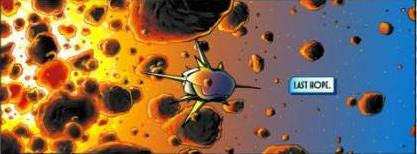
Collects: All-Star Superman #1-12.
Best Character: Superman.
Best Line Of Dialogue/Caption: “…And then the inimitable Lex Luthor opened up the floor and shook hands with a baboon in a Superman suit…” – Lex Luthor.
Best Scene/Moment: Superman saves Regan – Issue 10.
Best Issue: Issue 5 – The Gospel According to Lex Luthor. Some writers claim that the villains are the most important part of writing superhero comics. People know the hero and typically understand what makes them tick. But with the villain, it’s difficult to make a complex one that isn’t just a one-note character. Lex Luthor is a brilliant sociopath who is dead set on proving to the world that Superman is an unnecessary crutch. He only hates Superman because of how much the world depends on him. You travel through jail with Lex while Clark interviews him during this issue, in the midst of a prison riot, and you learn that Lex is already ten steps ahead of the rest of the world, they just don’t know it yet. A brilliant character piece that beautifully blends action, drama, and comedy, there are many issues that standout in All-Star Superman but this Luthor centric issue deserves all the awards for its compelling narrative.
Why You Should Read It: This is hands down the best story I have ever read about or involving Superman in any capacity. So many moments stand out amongst this series that it is an injustice to read it and not love this portrayal of Superman. Morrison defines Superman in a way no writer ever has, making him more interesting by giving him more power, instead of doing things the opposite way and stripping him of power like people have done before. The main reason so many people dislike Superman is because “he’s too powerful”, appearing as though nothing can harm him. Morrison takes that fact and spins it in such a way that you find his invincibility to be an endearing character quality instead of a negative one, showing that seemingly limitless power can still result in plenty of interesting character moments. Simply put, you should read this series if you love or hate the Man Of Steel because it’ll give you an all new appreciation for him.
JLA Volume 1
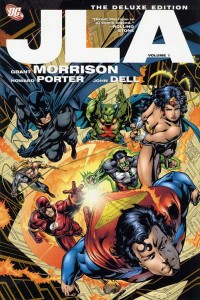 Grant Morrison was charged with revamping the Justice League back in the mid-nineties, transforming the title into the JLA. It was an attempt by DC to rejuvenate the dying line with a fresh new flare. The attempt worked marvelously (see what I did there?) and resulted in the JLA becoming one of DC’s hottest selling books. Morrison would take the team through a transitory period, helping to project them into the modern age of comics. Edgy costumes and characters began to get dulled out in favour of less colour and flash to make heroes more marketable in areas other than just comics. Morrison would later be tapped to help revamp the X-Men on the Marvel side of the fence right around the time when the first X-Men film was released.
Grant Morrison was charged with revamping the Justice League back in the mid-nineties, transforming the title into the JLA. It was an attempt by DC to rejuvenate the dying line with a fresh new flare. The attempt worked marvelously (see what I did there?) and resulted in the JLA becoming one of DC’s hottest selling books. Morrison would take the team through a transitory period, helping to project them into the modern age of comics. Edgy costumes and characters began to get dulled out in favour of less colour and flash to make heroes more marketable in areas other than just comics. Morrison would later be tapped to help revamp the X-Men on the Marvel side of the fence right around the time when the first X-Men film was released.
JLA Volume 1 follows the super team of Superman, Batman, Wonder Woman, Green Lantern, The Flash, Aquaman and Martian Manhunter as they tackle threats against planet Earth. Whether it is alien invasions, team betrayals, mental attacks or recruiting the next generation of Justice Leaguers, the JLA faces it all head on. Under Morrison’s guidance the JLA is broadened to new horizons and introduces plenty of new concepts and characters into the fold.
The beautiful thing about Grant Morrison’s run with the JLA is that is perfectly encases the feel of comics from the nineties as well as the new millennium, as the run fell towards the back end of the nineties. You’ve got your bombastic issues with plenty of panel crossovers and peculiar scene transitions but as you travel deeper into the run you begin to see the rise of the wide screen era, wherein superhero comics started to become more cinematic in scope with the push for expanding comics in media. With this volume, it is all nineties. You’ve got the ugly costumes, hilariously bad one-liners, and odd plots that are striving to be deeper than what they really are. That’s part of the fun of the early stages of Grant Morrison’s JLA run though. It harkens back to a time in comics where everything wasn’t so grim and dire. Grant still tackles stories that felt huge conceptually but presented them in such a way that you never felt burdened by the content. For example, the first storyline is all about an alien invasion, something that any big comic publisher could stretch out into a dark, epic event spanning months on end but in the JLA the story never veers into darkness. The story remains light and treads into the invasion story without every becoming too convoluted that you need to read six other comics that tie-in so you can understand everything that’s happening. The story itself is only a few issues long and hits all the right notes along the way. Then you can look at the storyline about angels invading Earth and get the same take away. Yes, the stories tread the realm of strikingly similar in some regards, something that Morrison takes time to actually poke fun at later on in the volume, but the concept still remains grounded enough that it makes the current event structure in place for comics right now feel completely useless.
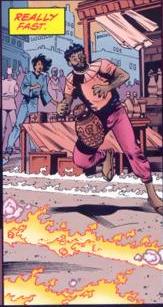
As I said above, the JLA consists of seven of DC’s biggest and brightest heroes, all coming together for the betterment of the planet, putting their many differences aside for the greater good. These seven characters are obviously key points to the success of this team and title, largely due to the way Morrison maneuvers them around each other as well as how he has them work together. It’s the character interactions that readers will definitely remember most coming out of reading this series, as they are what define the most memorable moments and do so with general ease. Morrison throws together a self-conscious Superman, a broody Batman, a no nonsense Wonder Woman, a rookie Green Lantern, a cocky Flash, an arrogant Aquaman with a humble Martian Manhunter and the results are absolutely entertaining. You watch the relationship dynamic between Green Lantern and The Flash develop beautiful as the story progresses, going from a point where they can’t stand each other to where the two men start to feed off of each other and become a dynamic duo. Batman’s resilient nature is on full display and creates some great banter between himself and the rest of the team. Meanwhile you have someone like Aquaman who, like Batman, doesn’t want to be part of the team but eventually comes around because of the adventures they’re experiencing. Morrison approaches each character and their dynamic as a sort of math equation, adding and subtracting them to and from one another to see what pops out on the other side.
One of the more disappointing parts of the JLA is the way it ties in with the rest of the DC publishing line from that time period. The mid-nineties were a weird time for comics, with ugly costume changes and major character overhauls. Kyle Rayner takes up the reigns as the new Green Lantern following the death of Hal Jordan, which just feels incredibly brushed over and absent. Superman has a really ugly mullet one issue, only to then have shorter hair and an all-new blue costume the next. These changes are something that happen in the main titles for these characters but should be at least referenced or mildly explained in the JLA series. As such, there will be just a few moments where you feel like you missed one or two story beats when in reality they just played out in the main series for these characters during that time frame.
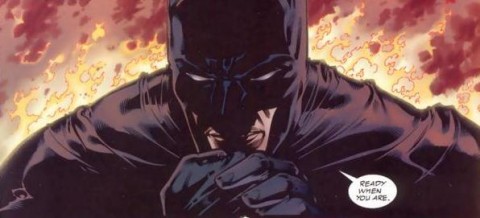
Collects: JLA #1-9, JLA Secret Files.
Best Character: Green Lantern.
Best Line Of Dialogue/Caption: “Man this thing’s gonna translate last night’s bean burrito into Beethoven’s Fifth symphony if that’s what you want.” – Green Lantern.
Best Scene/Moment: Batman discovers the Hypermen’s weakness – Issue 3.
Best Issue: Issue 5. Issue 5 is a great one off story involving recruitment for new members of the JLA. Tomorrow Woman becomes an immediate front runner for membership and is quickly drafted into the ranks of the other heroes. Little do the heroes know that Professors Ivo and T.O. Morrow have a personal stake in Tomorrow Woman’s success. It’s a great issue that examines what happens when a person who is supposed to be inherently evil rejects what’s in their DNA and tries to be good instead. This issue is a triumph in well plotted, emotional storytelling and serves as perfect palette cleanser between arcs.
Why You Should Read It: In my opinion, this comic kicks off an important transitory period in comics. Here is where you see that shift in style and concept from the nineties to the two thousands, where comics became less about being grandiose and flashy to more about story and thinking big. Grant Morrison is an important figure in taking those landmark steps towards the widescreen era of comics that brought rise to writers like Brian Michael Bendis. If you want to read the figure-head series that saved the DC comics in the late nineties, then look no further because this is the series you’re looking for.

